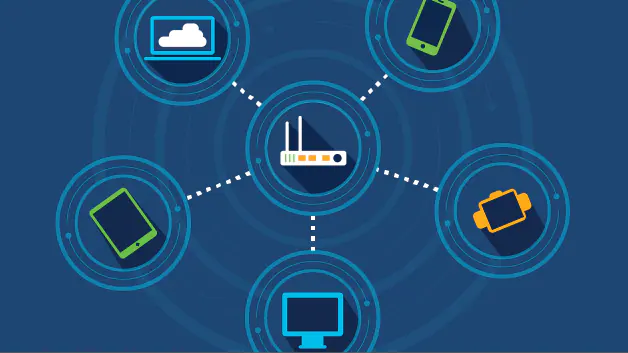A computer network could help enhance the efficiency and security of your everyday business. What exactly does this mean? If you’re not in the IT field, most people aren’t aware of the elements of a network and why each part is crucial. It’s also unclear which aspects of a network could be cloud-hosted and which components should be kept in the house.
Every business has unique instances for specific network design that meets the company’s particular requirements. In reality, businesses are operating today in much the same manner as the technology they employ. For instance, the majority of companies depend on phones, email, data, mobility, and connectivity. When you think about the network that makes this possible, most networks function similarly to one another.
If you’re setting up an enterprise network in the first instance or looking to upgrade your current network, here are some of the considerations you’ll be required to consider.
To set up an internet-connected network for your business, you have to consider several factors. Making a computer network work smoothly in a work setting is quite different from creating an individual home network or one for domestic use. The design of a business network involves a lot of difficulty and security concerns. The kind of network you choose for your company will be based on your requirements, and the elements of your computer network will be the same.
Here’s the necessary equipment for setting up the computer network of your company:
Modem
A modem, short for modulator-demodulator, is a hardware component of your network that helps your computer and other devices connect with the internet. The device converts digital information that computers recognize into analog data, transmitted via cable.
The modems you commonly encounter are likely to be cable modems that support the DOCSIS (Data Over Cable Services Interface Specification), which can be used to transmit data over the internet via coaxial and hybrid cables. You can receive cable internet, TV, digital phone line, and wire.
Router
A router is the part of the network hardware that transfers data packets across networks. Simply put, it transmits files from an internet-connected cable to your device.
The internet cable is connected to your router in a primary network connection, allowing it to transfer and receive information via the internet. Other devices within your office network can connect to your router via an Ethernet switch and have connectivity to the web.
Firewall
The router or firewall is your first line of defense against the external world. A reliable firewall is an excellent way to lower your risk profile. Without a firewall, there’s nothing to protect you from known dangers present on the internet. An effective firewall allows users to restrict access to the internet. For instance, if, example, you’d like to limit access to websites related to alcohol and drugs or diverse categories, you’re free to control access to that content according to your preferences.
Switch
The switch is the point of connection for each piece of the hardware part of the network. If you plan to save a file you’ve edited to a server via an electronic device, the data transfer first needs to go through the switch to get into the servers. Similar is the case for the printers you use. Most importantly, switches provide the central point where each part of the network will be able to communicate through. When deciding on the kind of switch you’d like to have to purchase, there are a few points to take into consideration.
Wired or Wireless Network
Start by deciding where you would like your computers to be placed in your office. If you want to use wireless networking, it is necessary to buy an internet-connected router. Managed IT networking services & solution providers in Ahmedabad, Gujarat, India. A Wireless network lets you use your laptop anywhere within your office or home. However, as per Microsoft, the cabled connection is the safest and most reliable option. If you work in an office, you will require an office computer setup that is safe and secure.
Connect to the Internet
Broadband is the quickest, most reliable choice and is accessible throughout the country through the local cable provider. Most modern computers have an adaptor for networks already installed at the back. If it doesn’t have one, you can include one. Your Internet service provider will be in a position to assist you in this regard so that you can gain Internet access.
How to Set Up a Small Business Computer Network
If your primary computer is connected to the Internet, remove that network cord from your laptop and connect it to the port at the back of your router labeled Internet or WAN. WLAN. If it’s not connected, connect the cable for network connectivity into your modem and then plug the opposite end into the router’s Internet, WAN, or WLAN port. For Digital Marketing Services & solution providers in Ahmedabad, India.
Connect the router and then wait for a few minutes. The light will appear at the top of the router. This means you’ll know that the connection has been established. Shut down all your computer before accessing cables for networks, Attach the cable for the network to the network adaptor on one side of the laptop. The other end of the line connects to your network device, which in this case is a router. Switch on your computer, and it is likely to be connected. Safeguard every computer in the network by using passwords or restrictions and programs such as firewalls, anti-spyware, and anti-virus software.
Final Thoughts
While these suggestions and the best practices are a good start, remember that every small business is unique and has no one-size-fits-all solutions. It’s all about how well you know your requirements and match them with the network hardware that you can afford in your price range. Being aware of this and planning to grow will enable you to maximize the benefits of your office network’s small setup.
Reach out to us with questions or require assistance in establishing and constructing an online presence for your business.

